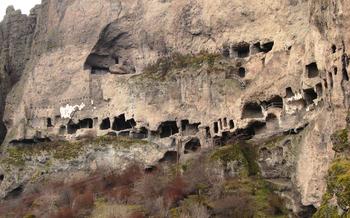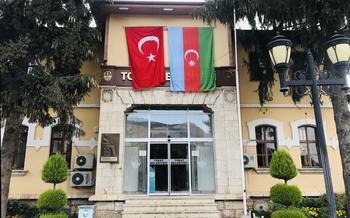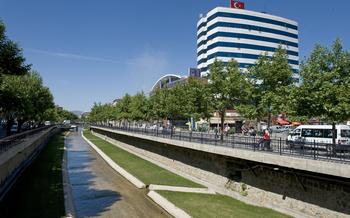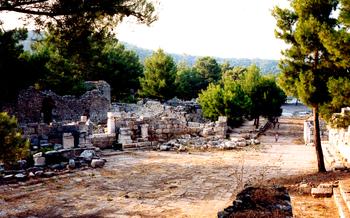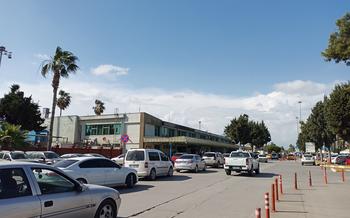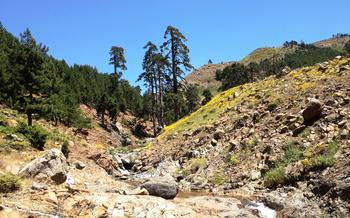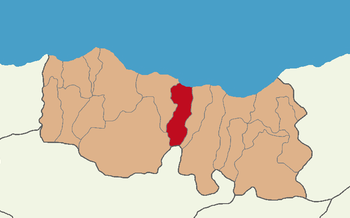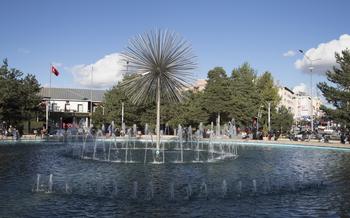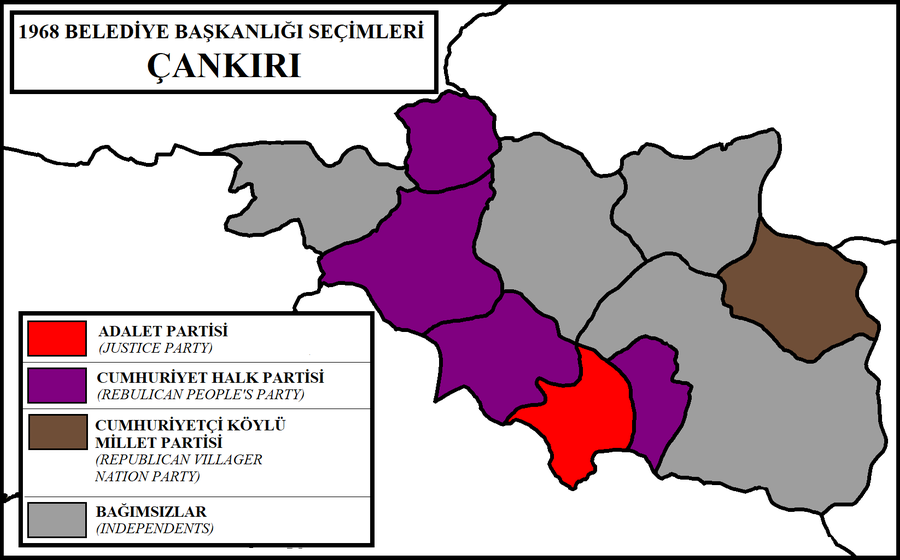
Karaahmetli Village Traditional Architecture
- Unique Architectural Style
- Traditional Houses in Karaahmetli Village
- Stone Masonry: A Testament to Precision and Artistry
- Woodworking and Carpentry
- Preservation Efforts
- Village Layout and Urban Planning
- Harmony with Nature
- Cultural Significance
- Tourism and Cultural Heritage
- Local Festivals and Events
- Visitor Etiquette and Respect
- Sustainable Tourism Practices
- Insider Tip: A Culinary Delight
Unique Architectural Style
Karaahmetli Village stands out with its distinctive architectural style, a testament to the creativity and skill of its builders. The use of locally sourced materials, such as stone, wood, and mud, creates a harmonious blend with the surrounding landscape. The houses are constructed in a traditional style, with thick walls providing insulation against the harsh winters and cool summers. Intricate craftsmanship is evident in the decorative elements, such as carved doorways, ornate window frames, and colorful tiles. The overall effect is one of unity and balance, where the buildings seem to rise organically from the earth. This unique architectural style encapsulates the history and culture of Karaahmetli Village, making it a must-see destination for anyone interested in traditional Turkish architecture.
Traditional Houses in Karaahmetli Village
The traditional houses in Karaahmetli Village are a testament to the ingenuity and craftsmanship of its inhabitants. Built using local materials such as stone, wood, and mud, these houses showcase a harmonious blend of functionality and aesthetics. The houses are typically two-storied, with the ground floor used for storage and livestock, while the upper floor serves as the living quarters. The layout of the houses is designed to maximize space and comfort, with a central courtyard that provides natural light and ventilation. The walls are thick and made of stone, providing insulation against the harsh weather conditions. The roofs are constructed using wooden beams and covered with traditional red tiles. The houses often feature intricate carvings and decorative elements, reflecting the artistic skills of the local craftsmen. The use of natural materials and the careful attention to detail create a warm and inviting atmosphere, making these traditional houses a true representation of the village's rich heritage.
Stone Masonry: A Testament to Precision and Artistry
One of the most striking features of Karaahmetli Village's traditional architecture is the remarkable stone masonry skills exhibited in the construction of houses, walls, and other structures. Local craftsmen have mastered the art of working with stone, creating precise and intricate patterns that showcase their exceptional craftsmanship.
The houses in the village are predominantly built using local stones, carefully selected for their durability and aesthetic qualities. The stones are meticulously cut and shaped by hand, ensuring a perfect fit and creating a harmonious appearance. The walls, often thick and sturdy, are constructed using a dry-stone technique, without the use of mortar or adhesives. This traditional method not only adds to the structural integrity of the buildings but also allows for natural ventilation and insulation, keeping the interiors cool in the summer and warm in the winter.
The stonework extends beyond the walls, gracing doorways, windows, and other architectural elements. Ornate lintels, arches, and corbels add a touch of elegance and sophistication to the otherwise simple facades. The intricate carvings and decorative motifs on these stone elements showcase the artistry and creativity of the local craftsmen.
The stone masonry in Karaahmetli Village is not merely a construction technique but an art form that has been passed down through generations. Each stone is carefully placed and arranged, creating patterns and textures that are both visually appealing and structurally sound. The result is a testament to the skill, precision, and artistry of the local builders, who have transformed ordinary stones into beautiful and enduring works of art.
Woodworking and Carpentry
The traditional houses of Karaahmetli Village are adorned with intricate woodwork and carpentry that showcase the exceptional skills of local artisans. Ornate doorways and window frames are meticulously crafted, featuring intricate carvings and geometric patterns that reflect the village's rich cultural heritage. Inside the houses, visitors can admire decorative elements such as hand-carved beams, corbels, and moldings, each piece a testament to the dedication and artistry of the village's carpenters. Furniture is also crafted from locally sourced wood, with traditional designs that have been passed down through generations. Chests, tables, and chairs are often embellished with carvings and inlaid work, demonstrating the deep appreciation for craftsmanship that is ingrained in the village's identity.
Preservation Efforts
The traditional architecture of Karaahmetli Village is not merely a relic of the past but a living heritage that continues to thrive thanks to ongoing preservation efforts. Recognizing its cultural and historical significance, local authorities, organizations, and community members have joined hands to safeguard this architectural treasure. Restoration projects have been meticulously undertaken, using traditional techniques and materials to maintain the authenticity of the village's buildings. Workshops and training programs are organized to impart traditional construction skills to younger generations, ensuring the continuity of this unique architectural legacy. Through these concerted efforts, Karaahmetli Village stands as a testament to the resilience and dedication of its community, preserving its traditional architecture for future generations to appreciate and enjoy.
Village Layout and Urban Planning
Karaahmetli Village exhibits a traditional layout that has remained largely unchanged over the centuries. The narrow cobblestone streets wind their way through the village, connecting the various neighborhoods and creating a maze-like atmosphere. Communal spaces, such as village squares and courtyards, provide gathering places for residents to socialize and interact. The placement of buildings has been carefully considered to maximize sunlight and protection from the elements. Houses are often arranged in clusters, with shared walls and courtyards, creating a sense of community and togetherness. This thoughtful urban planning reflects the village's rich history and cultural traditions, showcasing the wisdom and ingenuity of its inhabitants.
Harmony with Nature
The traditional architecture of Karaahmetli Village showcases a profound connection with the natural environment. Local builders utilized sustainable materials sourced from the surrounding area, reducing the carbon footprint of construction. Stone and wood, abundant in the region, were the primary materials used for homes and other structures. The thick stone walls provided excellent insulation, maintaining a comfortable indoor temperature year-round. Wooden beams and rafters supported the roofs, adding to the structural integrity and aesthetic appeal of the buildings.
The village's layout was carefully planned to maximize sunlight and protection from the elements. Narrow cobblestone streets meandered through the village, creating a maze-like network that offered shade and shelter from the sun and wind. Buildings were strategically positioned to capture the warmth of the sun in the winter and create shaded areas in the summer. This thoughtful design ensured the comfort of residents while minimizing their impact on the environment.
The traditional houses in Karaahmetli Village blended seamlessly into the surrounding landscape. The use of natural materials and colors, such as the warm hues of the stone and the soft browns of the wood, created a harmonious relationship between the buildings and their environment. The village appeared as an extension of the natural landscape, rather than an intrusion upon it.
Overall, the traditional architecture of Karaahmetli Village reflects a deep understanding of the natural environment and a commitment to sustainable building practices. By utilizing local materials, incorporating passive solar design, and respecting the surrounding landscape, the village's builders created a harmonious relationship between human habitation and the natural world.
Cultural Significance
The traditional architecture of Karaahmetli Village is deeply intertwined with the identity, values, and lifestyle of the local community. Each house, street, and communal space tells a story of the village's past, present, and future. The architectural heritage reflects the ingenuity, craftsmanship, and resilience of the people who have called this place home for generations. Through its unique style and construction techniques, the village's architecture embodies a sense of place and belonging, fostering a strong connection between residents and their environment. Moreover, the preservation of traditional architecture serves as a testament to the community's commitment to its roots and cultural identity, ensuring that future generations can appreciate and learn from the wisdom and skills of their ancestors.
Tourism and Cultural Heritage
Karaahmetli Village's traditional architecture is a valuable cultural asset and a significant attraction for tourists interested in experiencing authentic Turkish culture and history. The village offers a unique opportunity to step back in time and witness the traditional lifestyle and craftsmanship of the region. Visitors can explore the narrow cobblestone streets, admire the intricate details of the stone and wood carvings, and engage with local artisans who demonstrate their traditional skills. Preserving the village's traditional architecture is crucial for promoting cultural heritage tourism and providing visitors with an immersive and memorable experience. By showcasing the unique blend of history, craftsmanship, and sustainability, Karaahmetli Village has the potential to attract visitors from around the world, fostering cultural exchange and appreciation for Turkey's rich architectural heritage.
Local Festivals and Events
Karaahmetli Village comes alive during its annual festivals and events, which provide a vibrant showcase of the village's traditional architecture and cultural heritage. One of the most notable events is the Karaahmetli Village Traditional Architecture Festival, held every summer. This festival celebrates the unique architectural heritage of the village, with exhibitions, workshops, and demonstrations of traditional building techniques and crafts. Visitors can witness skilled artisans showcasing their skills in stone masonry, woodworking, and other traditional crafts, gaining insights into the intricate craftsmanship that goes into the village's architecture. The festival also features traditional music, dance, and food, offering visitors a chance to immerse themselves in the rich cultural traditions of the region.
Visitor Etiquette and Respect
When visiting Karaahmetli Village and interacting with its residents, it is essential to be mindful of local customs and traditions to ensure a respectful and positive experience for all. Here are some guidelines to keep in mind:
-
Dress modestly: As a conservative village, visitors should dress modestly, avoiding revealing or overly casual attire, particularly when visiting religious sites or interacting with elders.
-
Greetings: When meeting villagers, a warm greeting accompanied by a handshake or nod is appropriate. It is customary to greet elders first as a sign of respect.
-
Language: While Turkish is the primary language spoken in the village, some residents may understand basic English or other languages. However, it is helpful to learn a few Turkish phrases to show respect and facilitate communication.
-
Photography: Before taking photographs of people or private property, always ask for permission. Respect the privacy of villagers, especially when capturing images in sensitive areas.
-
Noise level: Be mindful of noise levels, especially during prayer times or late at night, to avoid disturbing the tranquility of the village.
-
Cultural sensitivity: Respect local customs and traditions, such as religious practices, gender roles, and family structures, to avoid misunderstandings or causing offense.
By following these guidelines, visitors can contribute to a harmonious and enjoyable experience for themselves and the villagers of Karaahmetli, fostering mutual understanding and preserving the village's unique cultural heritage.
Sustainable Tourism Practices
Promoting sustainable tourism practices is crucial to ensure the preservation of Karaahmetli Village's traditional architecture while minimizing negative environmental impacts. Visitors are encouraged to adopt responsible tourism practices, such as respecting the village's cultural heritage, using local transportation, minimizing waste, and supporting local businesses. This not only contributes to the village's economic sustainability but also helps maintain its authenticity and charm. Educational initiatives and workshops can be organized to raise awareness among visitors about the importance of sustainable tourism and provide guidance on responsible travel practices. By embracing sustainable tourism, visitors can contribute to the long-term preservation of Karaahmetli Village's unique traditional architecture and support the local community's efforts to protect their cultural heritage.
Insider Tip: A Culinary Delight
As a seasoned traveler and lover of local cuisine, I highly recommend trying the village's specialty dish, "Çankırı Mantısı." These delicious handmade dumplings, filled with a savory mixture of minced meat and spices, are a must-try for any food enthusiast. Pair them with a glass of refreshing ayran, a traditional Turkish yogurt drink, for a truly authentic culinary experience. You can find the best Çankırı Mantısı at the local restaurants in the village center, where you can savor the flavors while immersing yourself in the village's vibrant atmosphere.
